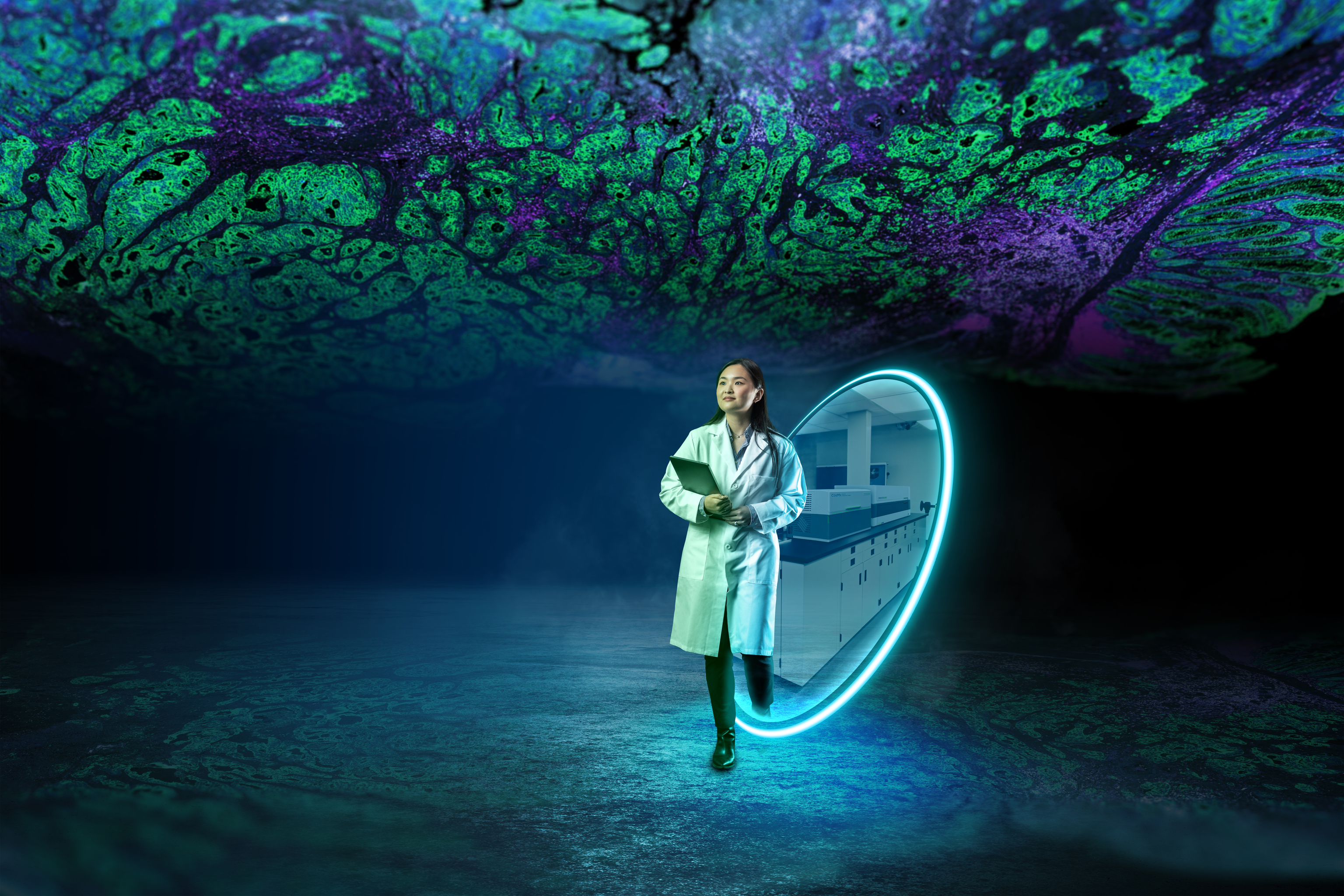
Pathology Visions 2022
Spatial Multi-omics: A new vantage for digital pathology and AI
Join us for our workshop at Pathology Visions or deep dive into the Spatial Biology Ecosystem.
Monday, October 17. 4:30 – 4:50 Chairman’s Ballroom 368
Background: Artificial Intelligence (AI) and digital pathology is providing ever expanding methods for how we interpret histopathological presentation, though they rely on the ability to link structural presentation to orthologous information. With increasing sophistication in our analytical methods, the ability to deeply characterize the molecular underpinnings of tissue structures becomes critically important. To address the need for more comprehensive profiling of tissue on limited samples, we have developed methods that provide high-plex protein & RNA readouts from individual histology slides at subcellular resolution along with the analytical solutions to manage the increasing depth of profiling being collected.
Methods: The CosMx™ Spatial Molecular Imager (SMI) is a microfluidic, reagent cycling, automated microscope that utilizes 20nm-sized in-situ imaging-barcodes to accomplish highplex detection of multi-omic targets (RNA and Protein) in formalin-fixed, paraffin-embedded (FFPE) samples. These barcodes can be applied directly to FFPE embedded tissues to localize in-situ small sequence barcodes that are appended to standard in-situ RNA or oligo-labeled antibodies. Following overnight hybridization the tissue goes through automated cyclic 4-color fluorescence readout to determine the x, y, and z-coordinates of all the measured single-molecules. To manage the data generated by CosMx, we have also developed a cloud-based, scalable analysis environment, the AtoMx™ Informatics Portal.
Results: We show simultaneous spatial profiling for over 1000 plex RNAs targets in FFPE tissues ranging from cell pellets, pancreatic tissue, lymph node, and multiple cancer tissue capturing approximately 1 million cells from each tissue. We also demonstrate detection of 64 protein targets simultaneously within breast cancer, and integration of the CosMx platform’s RNA & protein readouts with the structurally resolved profiling of key lymphoid structures with the GeoMx Digital Spatial Profiler in lymph tissue. With more than 10 Terabytes of data may be collected for each slide, we process this data within the AtoMx environment to infer cell type and state, as well as cell-cell and ligand-receptor interactions, identifying both canonical and novel interactions involved in microenvironmental roles of each structure and cell type across these diverse tissues.
Conclusions: The GeoMx and CosMx platforms provide unique opportunities to take standard histopathology slides and capture deep spatially-resolved molecular information. To complement these platforms, the AtoMx portal provides an extensible, secure management and analysis solution. The data from these platforms open up new ways to train more accurate artificial intelligence, and bring a novel insight to digital pathology with implications for understanding disease progression and biomarker development.
Speaker

Jason Reeves, PhD
Associate Director of Computational Biology, NanoString
Dr. Jason Reeves, Ph.D. is the Associate Director of Computational Biology at NanoString Technologies. His team is responsible for developing data analysis solutions in addition to analysis services supporting academic and industry partnerships across oncology, rare and infectious disease, and neurobiology.



